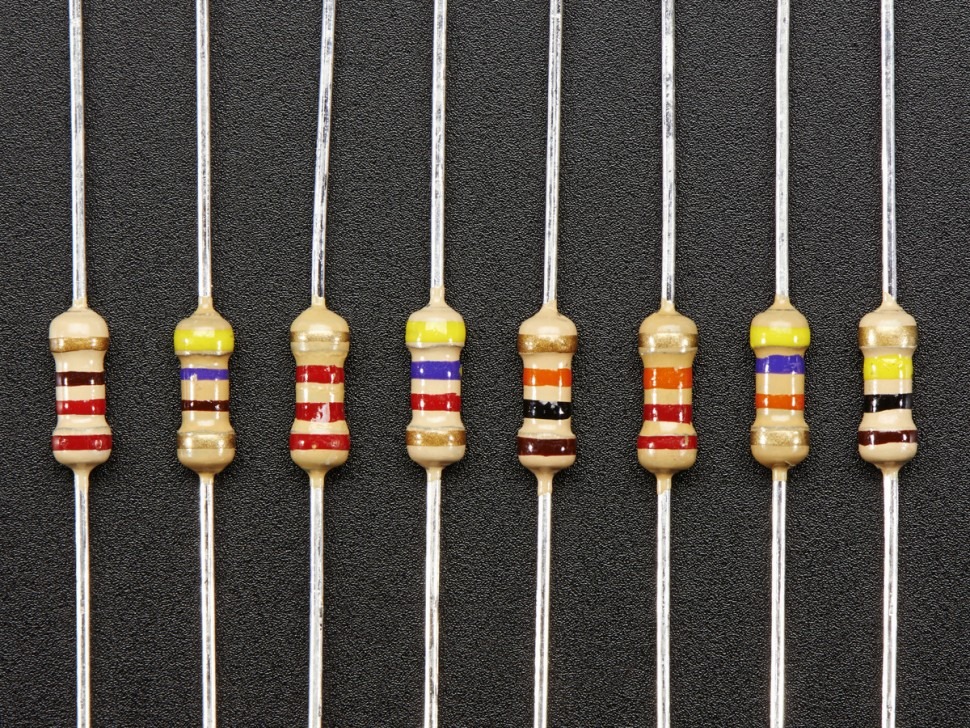
Resistor Color Code: A Comprehensive Guide
Resistors are fundamental components in electronic circuits, used to control the flow of electric current. To identify their values, manufacturers use a color-coding system printed directly on the resistor body. This article will break down the resistor color code system, how to read it, and how to determine resistance accurately.
What is a Resistor Color Code?
The resistor color code is a standard method for marking the resistance value and tolerance of resistors using colored bands. This system simplifies resistor identification, especially for small resistors where printing text would be challenging.
Understanding the Resistor Color Code System
Resistors typically have 4, 5, or 6 colored bands, each representing a specific number or multiplier that combines to indicate the resistor’s resistance value and tolerance. The colors correspond to numeric values from 0 to 9, with additional colors used for multipliers and tolerance.
The Color Bands and Their Meanings
Each color on a resistor corresponds to a particular number, multiplier, or tolerance. Here’s a breakdown of the common color codes:
| Color | Digit Value | Multiplier (Ω) | Tolerance |
|---|---|---|---|
| Black | 0 | 1 | – |
| Brown | 1 | 10 | ±1% |
| Red | 2 | 100 | ±2% |
| Orange | 3 | 1,000 | – |
| Yellow | 4 | 10,000 | – |
| Green | 5 | 100,000 | ±0.5% |
| Blue | 6 | 1,000,000 | ±0.25% |
| Violet | 7 | 10,000,000 | ±0.1% |
| Gray | 8 | 100,000,000 | ±0.05% |
| White | 9 | – | – |
| Gold | – | 0.1 | ±5% |
| Silver | – | 0.01 | ±10% |
| None | – | – | ±20% |
How to Read a 4-Band Resistor
Most resistors use a 4-band color code, with the bands representing two significant digits, a multiplier, and tolerance.
4.1 Step-by-Step Guide:
- Identify the First Band: This is the first digit of the resistance value.
- Identify the Second Band: This is the second digit of the resistance value.
- Identify the Multiplier: The third band represents the multiplier by which to multiply the two-digit number.
- Identify the Tolerance: The fourth band represents the tolerance, indicating the possible variation in resistance.
Example:
For a resistor with bands of Red, Violet, Yellow, and Gold:
- First Digit (Red) = 2
- Second Digit (Violet) = 7
- Multiplier (Yellow) = 10,000
- Tolerance (Gold) = ±5%
Thus, the resistance value is 27×10,000=270,00027 \times 10,000 = 270,000 Ω or 270 kΩ, with a tolerance of ±5%.
Reading a 5-Band Resistor
5-band resistors are commonly used in precision applications, where they provide a more accurate resistance value.
5.1 Step-by-Step Guide:
- First, Second, and Third Bands: Represent three significant digits of the resistance value.
- Fourth Band: This is the multiplier.
- Fifth Band: Indicates tolerance.
Example:
For a resistor with bands Brown, Black, Black, Orange, and Brown:
- First Digit (Brown) = 1
- Second Digit (Black) = 0
- Third Digit (Black) = 0
- Multiplier (Orange) = 1,000
- Tolerance (Brown) = ±1%
The resistance value is 100×1,000=100,000100 \times 1,000 = 100,000 Ω or 100 kΩ, with a tolerance of ±1%.
Tolerance and Its Importance
Tolerance indicates the allowed deviation from the specified resistance value. Lower tolerance values (e.g., ±1%) mean that the resistor has a more accurate resistance value, which is crucial in circuits requiring precise current control.
- High Precision: ±1% and ±2% tolerance resistors.
- Standard Precision: ±5% and ±10% tolerance resistors.
Tips for Reading Resistor Color Codes
- Always start from the band closest to the edge of the resistor.
- Use mnemonic devices to memorize the color sequence, such as “BBROYGBVGW” for Black, Brown, Red, Orange, Yellow, Green, Blue, Violet, Gray, and White.
- Use online resistor calculators if you’re uncertain, as these tools simplify the process by converting colors to values instantly.
Applications of Resistor Color Coding in Electronics
Resistor color coding is indispensable in various electronic applications:
- Circuit Design: Resistors regulate current flow, protecting components from damage.
- Repair and Maintenance: Quick identification helps technicians replace resistors without needing complex measuring devices.
- Prototyping: Engineers use color-coded resistors to quickly assemble and test circuits. Read More: Electrical Components
Conclusion
Understanding resistor color codes is essential for anyone working in electronics, from hobbyists to professionals. By mastering this simple yet effective system, you can accurately identify resistor values and build circuits with confidence. Whether dealing with 4-band, 5-band, or even specialized 6-band resistors, knowing how to read color codes will make your work faster and more efficient.
This guide has covered the essentials of resistor color codes, enabling you to decode resistor values and use them effectively in your projects.